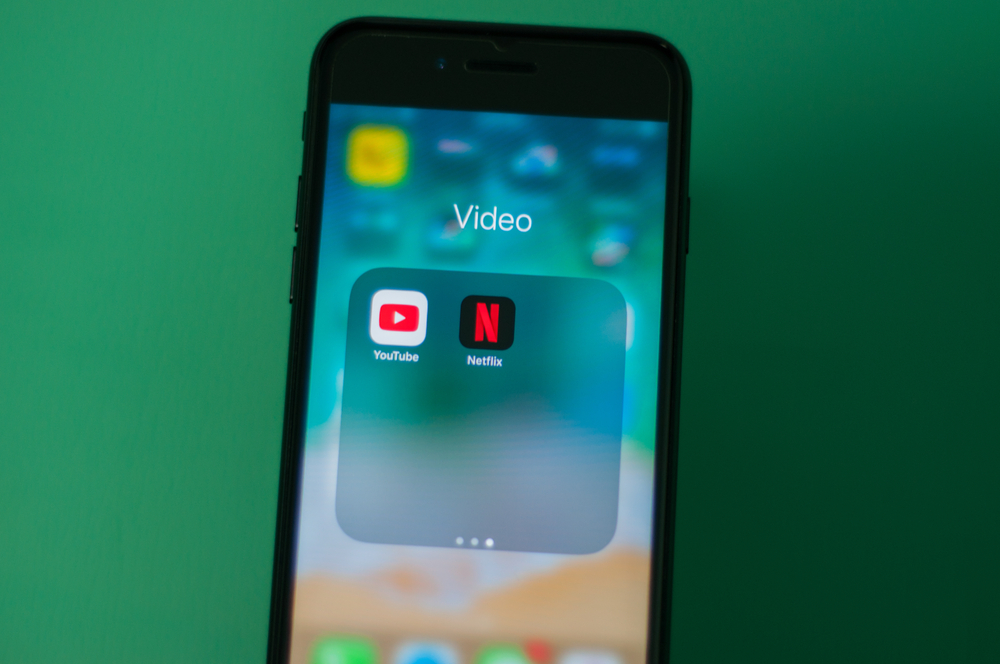Media coverage and research show that Canada provides the most expensive mobile data plans globally.
Even though the government commenced an initiative to lower the costs, the plans are still costly compared with other countries.
So, what causes the high price tags of cell phone plans in Canada?
Mobile phone plans are expensive in Canada due to various reasons. One is that the low population density causes consumers to pay higher rates for the sparse coverage.
Canada’s largest providers own nearly the entire market, making it harder for new companies with competitive prices to enter.
The following presents various aspects explaining why cell phone plans are so costly in Canada and potential affordable alternatives.
Table of Contents
Who are the biggest network providers in Canada?

Bell, Rogers, and Telus are the biggest telecom companies in Canada. The industry refers to them as the Big Three, and they own 90% of the market.
Their dominance is also a contributing factor for the high prices since they lack competition.
You can also find other major service providers aside from the Big Three that deliver quality, yet expensive services.
Some examples include SaskTel and Freedom Mobile, which dominate the market with the other three.
The more prominent companies offer the most unlimited plans, with significant players like SaskTel and Bell beginning at $80.
Moreover, the Big Three provide several prepaid services such as Public Mobile, Charr, and Lucky Mobile.
They also own and run many smaller companies under the Mobile Virtual Network Operator (MVNO), offering more affordable alternatives.
How do average cell phone plans in Canada compare to other countries?
A 2021 report by Rewheel Research based in Finland found that Canada has the highest cell phone plans globally.
The lowest monthly smartphone price with a 20-GB plan in Canada was the highest among 51 other countries.

The comparisons involved nations from different areas, including American, European, African, and Middle Eastern countries.
The high cost of cell phone plans forces Canadians to think twice before accessing the internet. It conditions them to limit watching Netflix or hesitate to open a YouTube video.
Sometimes users exceed the limit because they left an app for streaming music running.
These cautious acts result in the average Canadian using slightly more than 2GB every month.
In comparison, Americans use 8.5 GB monthly, Austrians consume about 22GB per month, and Taiwan has a 17GB monthly rate.
Canadians pay 15% to 40% more for data than Americans, respectively spending $50 and $40 for 2GB per month.
What factors influence the costs of cell phone plans in Canada?
The expensive cell phone plans in Canada can be a shock for foreigners.
It is essential to know the different elements contributing to the high price tags. These include:
1. Plan Combination
Data prices are the major contributors to Canada’s high cost of cell phone plans. However, adding other services to your mobile plan bumps up the final price tag to make it even more expensive.
For instance, a plan featuring data, text, and talk has very high rates. It can be double the cost of a comparable plan in the United States.
The expensive rates mean an average Canadian intentionally tries to lower the costs by using less than 2GB per month.

Additionally, if you intend to use streaming services on your smartphone, you can expect the bill to skyrocket.
The online service results in data usage exceeding 20GB, making bills 35% more expensive than in America.
2. Limited Competition
As previously mentioned, Canada’s most prominent network providers are Rogers, Bell, and Telus.
Aside from these Big Three, you can also find services from the reputable Freedom Mobile. These providers have a firm footing in the cell phone industry, making it difficult for new entries.
Limited competition means the companies are free to set their prices at high levels, knowing people will pay.
Other factors that aid in lowering the competition include:
· Restricted Foreign Investment
· Limited Access to the Wireless Spectrum
· Possibility for Price Coordination
· History of Acquisitions and Privatization
3. High Bar for New Entries
The existing and established service providers set the bar for market entry. Their high placement makes it hard for new companies to set up and join the market.

The large LTW networks cover 20% to 30% of the Canadian geographic area. In addition, approximately 94% of Canadians use these providers, delivering impressive statistics.
An interested company would require significant funds to join the market and beat the numbers.
The new company would need to invest heavily in hardware, constructing new towers, and setting up new antennae.
It would also lose money by offering competitive rates against the more extensive networks. This bleak vision discourages interested investors from entering the market, viewing an attempt as a waste of money and time.
4. Large Investments
The telecom industry received heavy investment to facilitate development, resulting in the current high costs of cell phone plans.
Major Canadian telecom companies spent $70 billion in 1987 on innovation, licensing fees, infrastructure, and spectrum acquisition.
This significant investment partly explains the country’s ongoing costly cell phone plans.
Although the expensive rates may seem reasonable, other countries’ experiences differ. For example, Australia similarly poured over $70 billion over the past decade in its telecom industry.

Nevertheless, their providers deliver lower prices and faster network speeds.
5. Low Population Density
Canada is a unique country because it has one of the lowest population densities worldwide. The large land has about four people per kilometer, creating a sparseness that is expensive for networks to cover.
Despite this, some companies like Bell have high prices with low coverage that seem to take advantage of user needs.
It covers less than a third of Canada yet has price rates that reflect a more extensive range.
Do the networks provide unlimited data plans in Canada?
In 2019, Canada’s Big Three considerably changed their pricing strategies. They initially offered large data plans but introduced a new unlimited data plan at lower costs in this new approach.
The providers also abandoned the more affordable options with lower data caps.
The unlimited plans provide no cap plans to aid in the country’s affordability and usage needs of mobile data.
If you require over 10GB every month, the unlimited plan is a worthwhile consideration. Nonetheless, it is necessary to know that the unlimited and large data plans incorporate a soft data cap.
What is the soft data cap on the data plans in Canada?

Unlimited and larger data plans should ideally have no caps. Nevertheless, they include a hidden soft data cap in the offer.
In this instance, your speed typically reduces once you reach this soft data cap.
Generally, the speed drops to between 256 kbps and 512 kbps until you renew your bill the following month.
The 512-kbps speed is slow enough to cause noticeable changes during data utility. For example, you can use it to stream a song online after a few seconds of buffering.
You can also watch a 360p video on YouTube after buffering for a few seconds. That speed can load Instagram photos in 5 to 10 seconds and load a web page in 7 seconds.
Is there an alternative to the expensive networks?
Unless you are a billionaire in Canada, the expensive cell phone plans can take a toll on your financial needs.
Fortunately, the country features other carriers apart from the larger network providers to give better mobile plans.
They present a more affordable option, although you may experience limited coverage.

The Mobile Virtual Network Operator (MVNO) is among the best examples of alternative and cheaper options.
It includes companies with their customer support and sales divisions. However, they buy services from the bigger providers at wholesale before selling to consumers.
Some popular MVNO providers in Canada include Virgin Mobile, Koodo, and Fido. Despite the Big Three owning and operating these companies, they offer more pocket-friendly options worth considering.
Are the MVNOs in Canada worth it?
The MVNOs are a welcome option for many Canadians since they provide several advantages, although they may have limited coverage.
One of their advantages is that they give more affordable prices, keeping pressure on major providers.
The larger companies, in turn, adjust and lower their costs in fear of losing customers to the cheaper prices.
MVNOs also offer an incentive for innovation as competitors seek ways to stay on top of the game.
Consequently, they improve customer service as every company tries to keep up with the competition while attracting and retaining clients.
Their existence offers a quality alternative for users who cannot afford the Big Three plans. This option is especially significant with the ongoing pandemic creating volatile economic situations.

How are the cell phone rates from regional competitors in Canada?
Canada has some regional companies that provide lower rates for cell phone plans. Thunder Bay, Saskatchewan, Quebec, and Manitoba are provinces with large, unpopulated land.
Despite this, they all have strong network carriers. You can get Tbaytel, SaskTel, Videotron, and MTS operating in the regions, respectively.
These regional service providers have mobile internet rates that are 19% to 31% cheaper than the national carriers.
They also present cell phone wireless costs that are 12% to 34% lower than their national counterparts.
The Competition Bureau reported that Canadian regions where only the Big Three operated had higher plan rates.
However, areas with a fourth competitor possessing a market share exceeding 5.5% reflected lower costs of cell phone plans.
Their rates ranged between 35% and 40% lower than other places without a fourth competitor.
Are the any strategies to lower the cost of cell phone plans in Canada?
The Canadian government started an initiative in early 2020 to lower the cost of cell phone plans by 25%.

Despite this, the ongoing rates are still some of the highest worldwide. The country has some strategies in place to help reduce the costs of mobile phone plans, including:
i. Obligatory Roaming and Tower Sharing
The Canadian Radio-television and Telecommunications Commission (CRTC) mandated the Big Three to offer national roaming services to regional operators.
This obligation directed them to deliver those services at regulated wholesale rates to providers like SaskTel, Videotron, and Freedom Mobile.
This decision ensured users could enjoy national coverage and not worry about disconnection when they leave their regional home network.
It also eliminated extra expenses when traveling since the connection came at a reasonable cost.
The mandatory tower-sharing also aimed at reducing the number of new cell towers companies constructed.
ii. Obligatory MVNO Access
Another strategy that can lower the mobile plan prices in Canada is having mandated MVNO access.
Generally, the national carriers individually negotiate and set the wholesale rates with MVNOs.
They typically do not conduct this process fairly or voluntarily.
A mandatory MVNO access lets independent wireless providers access the larger companies’ networks using regulated wholesale rates.

This move would enable them to compete on customer service, plans, and prices to offer more affordable options.

















